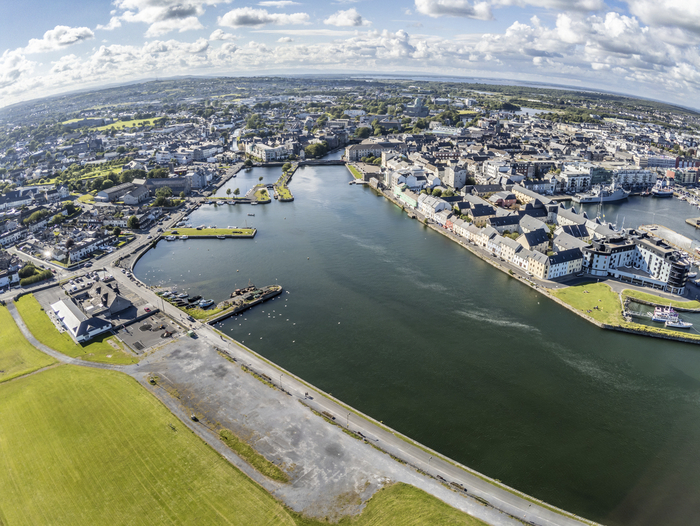Known nationally as the City of the Tribes, family has been at the core of Galway's development for centuries transforming what was once a small fishing town into the beating heart of the west of Ireland. So, who were the 14 influential families who laid the groundwork for Galway's success?
Today coined the 'medical device capital of Ireland', that Galway has become an economic and industrial powerhouse in the modern era is the result, some could argue, of our deeply ingrained appreciation and respect for family businesses, or at the very least - is because of them.
While at surface level this may sound flowery and dramatic, the story of Galway our history - as a city ruled by a oligarchy of 14 families - during the violent, Hiberno-Norman period of Irish history is, at the very least, pretty dramatic.
Merchant families working together
With family businesses and trades in Galway enjoying a rich and diverse history, they have become deeply intertwined with the city's economic and social development. As a long established hub for trade, fishing and craftsmanship, Galway's status as a fertile ground for establishing family-run enterprises was a given from the start.
This fertile ground became significantly more pronounced during the Hiberno-Norman period of local history. Dominating the political and commercial life in Galway, the famous 14 'Tribes of Galway' wielded a significant power. Wealthy and influential, the Athy, Blake, Bodkin, Brown, Deane, Ffont, Ffrench, Joyce, Lynch, Martin, Morris and Skerritt families were of English and Welsh origin and initially identified as part of the British noble classes and were loyal to the English monarchy. Just two out of the 14 families, the Kirwan and D'Arcy families, were of native Gaelic origin.
However, as time went on, these Norman families became increasingly Hibernian, adopting Irish manners, traditions and customs, becoming, as a result, 'more Gael than the Gael themselves'.

Title: Galway city in the medieval, photo taken from Galway City Museum's website (galwaycitymuseum.ie )
Establishing Galway's economy
From the 15th century to the 17th century, these 14 families ruled the city of Galway and, to an extent, the surrounding regions of 'Gaelic hinterlands' through an oligarchy which was, in many ways, independent and not aligned with the colonial English powers of the era. Responsible for commissioning public and religious buildings in Galway city, as well as trade networks that extended beyond the island of Ireland, spanning across continental Europe and the Americas. The Blake, Lynch and Ffrench families particularly, engaged in trade with Spain and France, trade which played a major role in shaping Galway's early economy.
These families, particularly the Blakes, Lynches, and Ffrenches, were involved in international trade, particularly with Spain and France, and played a major role in shaping Galway’s early economy. As a port town, Galway has hosted a variety of famous figures, one of the most notable being Christopher Columbus, who visited the city while on a voyage to Iceland, or the Faroe Islands in 1477.

One of Galway city's famous landmarks, Lynch's Castle, was one of the Lynch family's strongholds in Gaway.
Despite remaining somewhat loyal to the English crown, even during the period of the Gaelic resurgence, the 14 families went through a period of decline following the siege of the city in 1652. The 14 families were scattered and their wealth, homes and power lost. Following the fall of the Tribes, the city's economy declined and Galway's status as a principal port town for international trade reduced somewhat, but all was not lost for the people of Galway.
The 14 families may have conducted business through the lens of a 'live by the sword, die by the sword' mentality, but they were a proof of what entrepreneurial families can achieve, even during the worst of times.
Emerging talent
In the centuries following the glory years of Galway's Tribes, the economy recovered, its status as an influential port town was reinstated and new trades and skills emerged. Built upon the foundations that were laid by the 14 families, Galway's family-run businesses went through a boom with influential and successful entrepreneurs establishing themselves as industry leaders in the world of millers, shipbuilding and fishing.
Despite the variety of Galway's family-run businesses being from all avenues of industry in the region, the emphasis on family ties correlating with their success has been a consistent factor within Galway, even to this day. In the 19th and 20th centuries, Galway developed into a regional economic centre and as a result more family businesses were established than ever before. Rivalling huge, international businesses with personalised services and fostering long-lasting relationships with their customers, Galway's family businesses continue long established, deeply ingrained tradition to this day.

Aerial photo of Galway city. Photo: iStock.
As population growth, industrialisation and industry evolution and innovation opens new doors to Galway's family entrepreneurs, they have adapted to meet the needs of their customers, as well as giving back through charitable endeavours and supporting social and cultural initiatives in the region.
Today, Galway's family businesses, both old and new, continue to play a crucial role in the local economy, preserving a unique blend of tradition and innovation. Many continue to pass from generation to generation, maintaining their identity while adapting to modern challenges.
In this week's Galway Advertiser, we celebrate these businesses, their courage, longevity and their success, while remembering the families who, long ago set this wheel into motion, and imagining the brilliant entrepreneurs who will, undoubtedly, help to shape Galway's future.
Gaillimh Abú.

